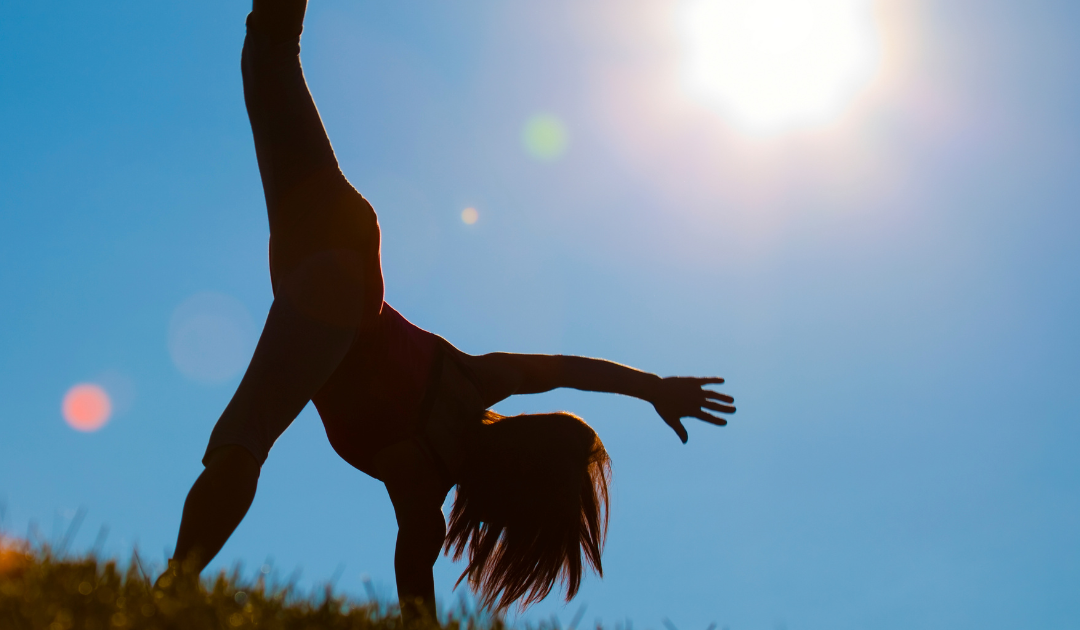Happy days, summer’s back!
Being out in the park with my clients is even more enjoyable than usual; I love spending time in the open air, feeling the warmth of the sun on my skin, and wearing lighter clothes. Of course, such exposure to the sun comes with a neon health warning as it risks sunburn, premature ageing and an increased risk of skin cancer. We’re used to hearing this, but remember that there are health benefits to be had if we can balance sun exposure with skin protection.
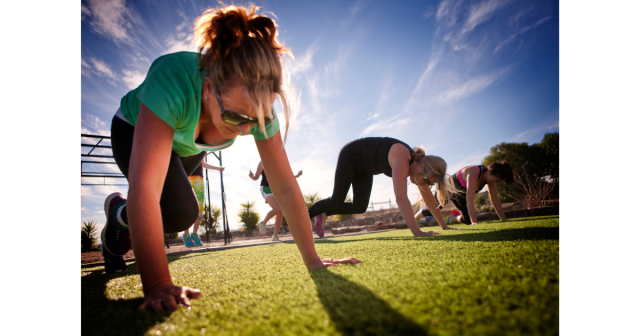
sun exposure to our skins has many health benefits
Spending time outdoors and profiting from the summer with its long daylight hours is gold dust as far as our health is concerned. Worryingly, research done in 2019 found that people spent only 2% of their time outdoors (that’s around 94 minutes a week) and further discovered that spending so much time indoors has led to a host of conditions, including depression, poor cardiovascular health, asthma and insomnia. As a species, we need to be outdoors!
We only have to look back to where we evolved – outside in the open air – it’s the most natural place for us. In primeval times we were exposed to natural light during the day and total darkness at night giving rise to what is known as the circadian rhythm. This 24-hour cycle is essential for our brains and bodies to function healthily, with sunlight triggering many of the natural processes that energise us during the day and darkness promoting other processes to aid our sleep at night.
Many who work night shifts suffer from something called Shift Work Disorder, characterised by insomnia when trying to sleep and excessive tiredness while trying to be awake; this can make people more prone to errors and accidents. The shifts disrupt the natural rhythm of life.

shift work causes circadian misalignment
One of the most important functions triggered by sunlight is the production of serotonin, a hormone which regulates your mood, appetite, memory and focus. The release of serotonin in the body occurs when sunlight stimulates the retina at the back of your eye and sends neural signals to the brain (3). Scientists have discovered that our skin also produces serotonin when exposed to sunlight and that this in turn increases levels of serotonin in the blood (1) – perhaps explaining why it feels good to be out in the sun.
Happily for me as an athlete, another way to boost serotonin is to exercise, which releases an amino acid called tryptophan, used by the brain to make serotonin – so exercising in the sunshine would appear to be a no-brainer! Obtaining tryptophan through diet is a little tricky as there is a blood-brain barrier, though one solution is to eat more complex carbohydrates such as vegetable, fruits, pulses and whole grains, which produce insulin making your muscles pull in more amino acids, giving tryptophan a better chance at reaching your brain (4). Making use of the sun’s rays would appear to be a more reliable method of making serotonin!
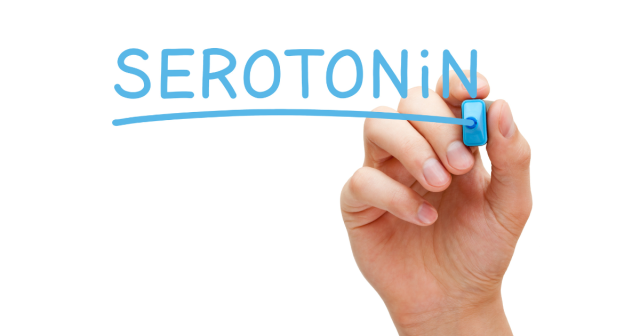
serotonin is a natural mood booster
During the winter of course we all spend more time indoors and you may have heard of, or suffered from, SAD or seasonal affective disorder. This is characterised by bouts of depression and has been linked to a drop in serotonin levels. Those suffering are advised to counter the symptoms by using a light therapy box at home to mimic natural sunlight (3).
Sunlight is also known to trigger the synthesis of Vitamin D in our bodies, which is essential for an optimal immune system function as well as maintaining bone health and absorption of calcium. The science behind this reaction can be explained as the sun’s ultraviolet (UVB) rays interacting with a protein called 7-DHC in the skin, converting it into Vitamin D3, which is the active form of Vitamin D (5).
Low Vitamin D levels will increase your risk of osteoporosis and broken bones. The Royal Osteoporosis Society advises that you can only get Vitamin D from the sun between the months of March and September and recommends that you expose your skin to the sun for ten minutes once or twice a day during this period. They also say that on a cloudy day it will take twice as long to produce the same amount of Vitamin D and that darker skin produces Vitamin D at a slower rate (6).
We can get a small amount of Vitamin D by eating foods such as eggs, oily fish and fortified cereals, but during the winter months the advice is to take a daily 10 mg (400 units) Vitamin D3 supplement. Most people prefer the capsule form but if you can bear it, have a tablespoon of cod liver oil each day – trust me, it’s disgusting if you smell it, but bearable if you hold your nose!! Taken in liquid form, a single tablespoon provides 272% Vitamin A and 340% Vitamin D of your daily requirements (7).
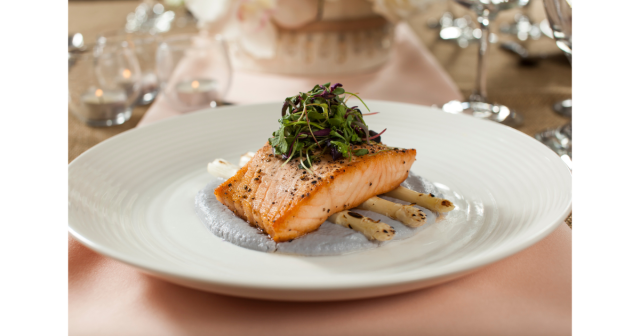
salmon is a great source of Vitamin D
Many people notice that the condition of their skin is better in the summer and those who suffer from psoriasis, eczema and acne may see some improvement. It’s true that UV light can be used in a medical setting to treat skin flare ups but prolonged exposure to natural sunlight should be treated with caution.
Which brings me back to my point about finding the right balance between exposure to and protection from the sun. While there are many good reasons for getting out into the sunshine, not least because it makes us feel good, there are equally good reasons for taking precautions.
Basking like a lizard for hours on end, claiming that you are topping up your Vitamin D, is risky and really not necessary. In truth, the short period of sun exposure as previously advised, is plenty for your body to produce Vitamin D and any excess will be disposed of naturally by your body (8). Over exposure means that ultraviolet (UV) radiation from the sun can penetrate the skin and damage cell DNA and the really bad news is that every bit of damage adds up throughout your lifetime. Damage to the skin’s pigment cells (melanocytes) can start in less than a minute in the sun and keep developing hours after the sun exposure ends. This damage can lead to melanoma, the deadliest type of skin cancer (5).
Advising on how much sun exposure is excessive will depend on the time of day and what your skin type is: those with fair skin will sunburn more quickly than those with darker skin and going outside between say 10am and 4pm will subject you to more direct sunlight than earlier or later in the day. As a basic rule, if you’re going to be outside for more than 15 minutes you should wear a broad spectrum UVA-UVB sunscreen of at least SPF 15, stay in the shade as much as possible, wear a wide brimmed hat, UV filtering sunglasses and protective clothing (3).
You’re probably wondering, as I am, whether sunscreen that effectively blocks UV light will prevent the production of Vitamin D and there is conflicting research into whether or not this is the case. The Harvard Medical School offers the practical hypothesis that, as very few people put on enough sunscreen to block all UV light, or they only use it irregularly, its effect on Vitamin D might not be so significant. They cite an Australian study to support this line of thought (9).
For athletes and fitness people planning to work out in the great outdoors, it’s advisable to wear sunscreen and plan your sessions early in the morning to avoid direct sunlight. Wear kit that’s breathable, light and sweat-wicking, along with sunglasses where practical. Sip water throughout your work out and keep drinking water for a time after you have finished and showered (10).
Better still, make your own isotonic drink to keep electrolytes at a safe level and help to support faster hydration.
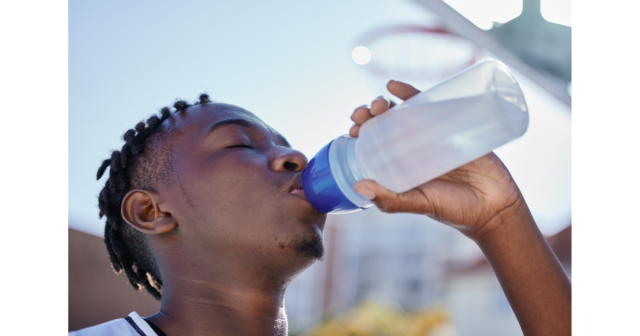
make your own healthy electrolyte drink
- 500ml of water (or coconut water)
- 1/2 teaspoon of salt (Himalayan Pink Salt)
- 4 teaspoons of runny honey
- 1 large slice of lemon or lime (squeezed or added whole)
Exercising in this way means you’ll gather all the benefits of sun exposure, while staying safely protected from its associated risks. Enjoy it out there!
References:
- https://somaticmovementcenter.com/serotonin-melatonin/
- https://www.sleepfoundation.org/shift-work-disorder/tips
- https://www.healthline.com/health/depression/benefits-sunlight
- https://www.health.harvard.edu/mind-and-mood/serotonin-the-natural-mood-booster
- https://www.skincancer.org/blog/sun-protection-and-vitamin-d/
- https://theros.org.uk/information-and-support/bone-health/vitamin-d-for-bones/
- https://www.netdoctor.co.uk/medicines/dietry/a33529546/cod-liver-oil-benefits/
- https://www.skincancer.org/blog/sun-protection-and-vitamin-d/
- https://www.health.harvard.edu/staying-healthy/6-things-you-should-know-about-vitamin-d
- https://www.menshealth.com/uk/fitness/a32639840/exercising-in-the-heat/

